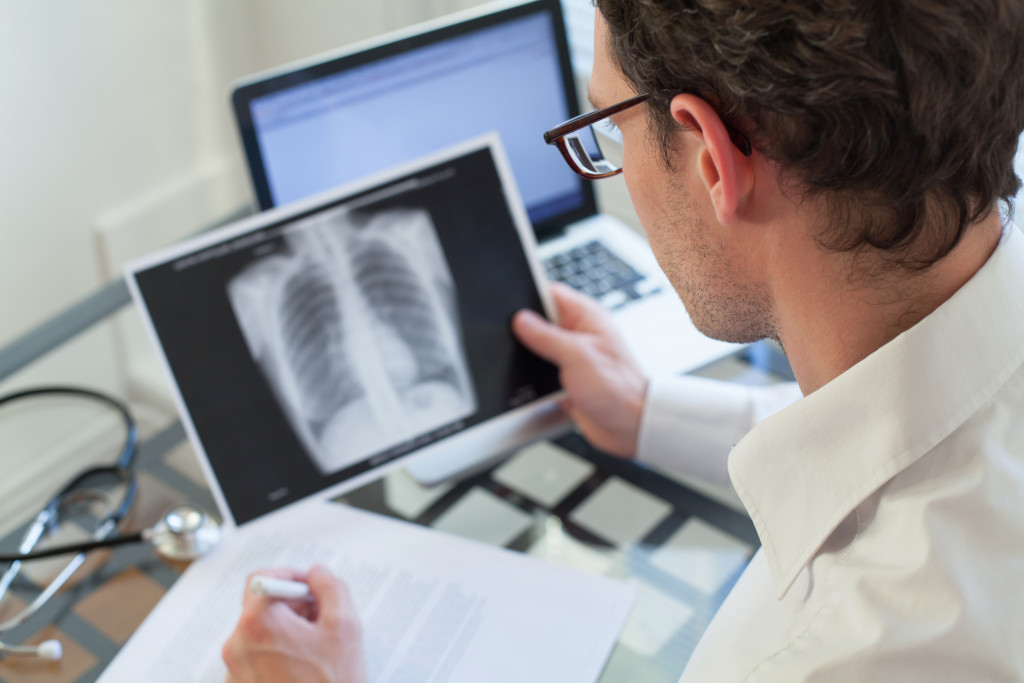The human body comprises many different systems that work together to keep the body functioning correctly. These systems include the nervous system, circulatory system, respiratory system, digestive system, and skeletal system. Each of these systems has a specific purpose and works with the other systems to keep the body healthy and work correctly.
One of the essential systems working in people’s bodies is the respiratory system. The respiratory system is responsible for taking in oxygen and getting rid of carbon dioxide. This process is essential for life because it allows the body to get the oxygen it needs to function properly. The respiratory system also helps regulate the body’s temperature by getting rid of heat.
The respiratory system consists of the nose, mouth, trachea, bronchi, and lungs. The nose and mouth are the entry points for air into the body. The trachea is a tube that carries air from the nose and mouth down into the lungs. The bronchi are branches off of the trachea that leads into each lung. However, the essential part of the respiratory system is the lungs because, without them, the entire system can’t function properly.
The Human Lungs
The lungs are a pair of organs located on either side of the chest. They are made up of many different parts that work together to help a person breathe. The largest part of the lungs is the alveoli, where oxygen and carbon dioxide are exchanged.
The alveoli are tiny sacs surrounded by small blood vessels called capillaries. When a person inhales, the air passes through the nose and mouth and into the trachea. It goes into the bronchi and then down into the lungs. Once the air reaches the alveoli, oxygen is absorbed into the blood, and carbon dioxide is exhaled out of the body.
The lungs play a pivotal role in human survival, and it is important to take care of them properly. Here are some of the most common diseases that involve the lungs.
Lung Cancer
Lung cancer is one of the most common and deadly types of cancer. It is caused by the abnormal growth of cells in the lungs. Non-small cell lung cancer is the most common type, and it typically grows and spreads slower than small cell lung cancer. Small cell lung cancer, however, is more aggressive and spreads quickly.
Symptoms of lung cancer include a persistent cough, coughing up blood, shortness of breath, chest pain, and weight loss. If you experience any of these symptoms, it is important to see a doctor as soon as possible because early detection is key to successful treatment.
Treatment for lung cancer depends on the stage of cancer, the type of cancer, and the patient’s overall health. Treatment options include surgery, radiation therapy, chemotherapy, and targeted therapy.

Asthma
Asthma is one of the most common genetic diseases among Americans. It causes inflammation of the airways. This inflammation makes it difficult to breathe and can cause a number of symptoms such as shortness of breath, chest tightness, coughing, and wheezing. Asthma can be caused by a number of things, including allergies, cold air, exercise, and smoke.
There is no cure for asthma, but it can be managed with medication. Medications used to treat asthma include bronchodilators (to open up the airways), corticosteroids (to reduce inflammation), and cromolyn sodium (to prevent asthma attacks). Reducing asthma attacks is also one of the perks of having a dehumidifier. If your asthma is becoming worse every day, it is important to work with your doctor to develop a treatment plan that works best for you.
Chronic Obstructive Pulmonary Disease (COPD)
Chronic obstructive pulmonary disease (COPD) is a lung disease that makes it difficult to breathe. COPD is a progressive disease, meaning it gets worse over time. It is caused by long-term exposure to irritants such as smoke, chemical fumes, and dust.
Symptoms of COPD include shortness of breath, coughing, and wheezing. These symptoms typically worsen over time and can eventually lead to respiratory failure. Treatment for COPD focuses on relieving symptoms and slowing the progression of the disease. Medications used to treat COPD include bronchodilators, corticosteroids, and oxygen therapy. Surgery may also be an option for some people with COPD.
Pneumonia
Pneumonia is an infection that affects the lungs and causes inflammation. It is caused by many different viruses, bacteria, and fungi. Symptoms of pneumonia include fever, chills, cough, rapid breathing rate, chest pain when inhaling profoundly, and coughing up mucus that may contain blood.
If you suspect pneumonia, it is vital to seek medical attention. Treatment for pneumonia typically involves antibiotics if the cause is bacterial and antiviral medications if the reason is viral. Other treatments may also be necessary depending on your symptoms and overall health.
It is clear that the human lung is an essential part of our body, and it is crucial for us to take care of it properly. By understanding how the lungs work and some common diseases that affect them, we can ensure we take good care of this vital component of our health and well-being.







